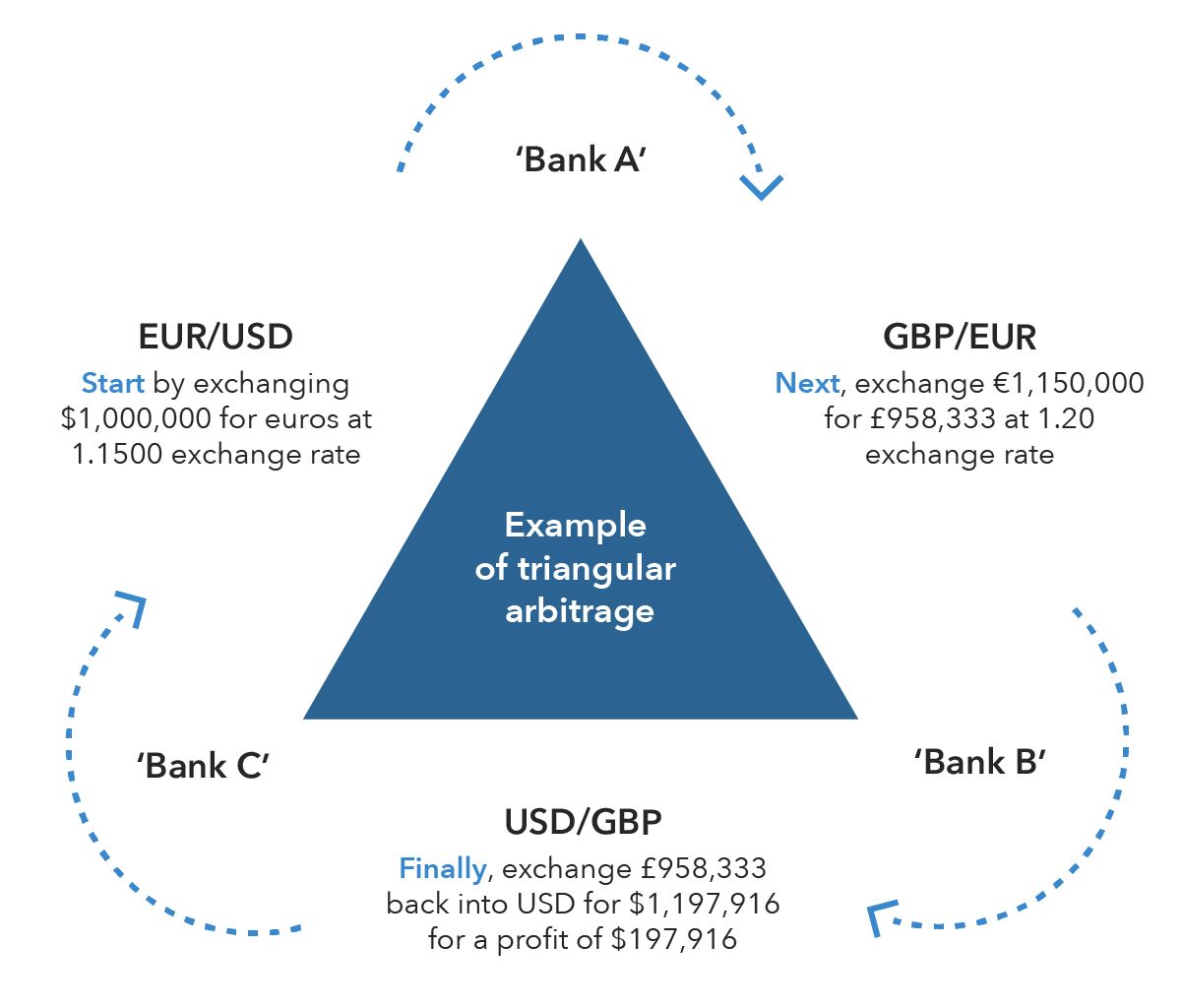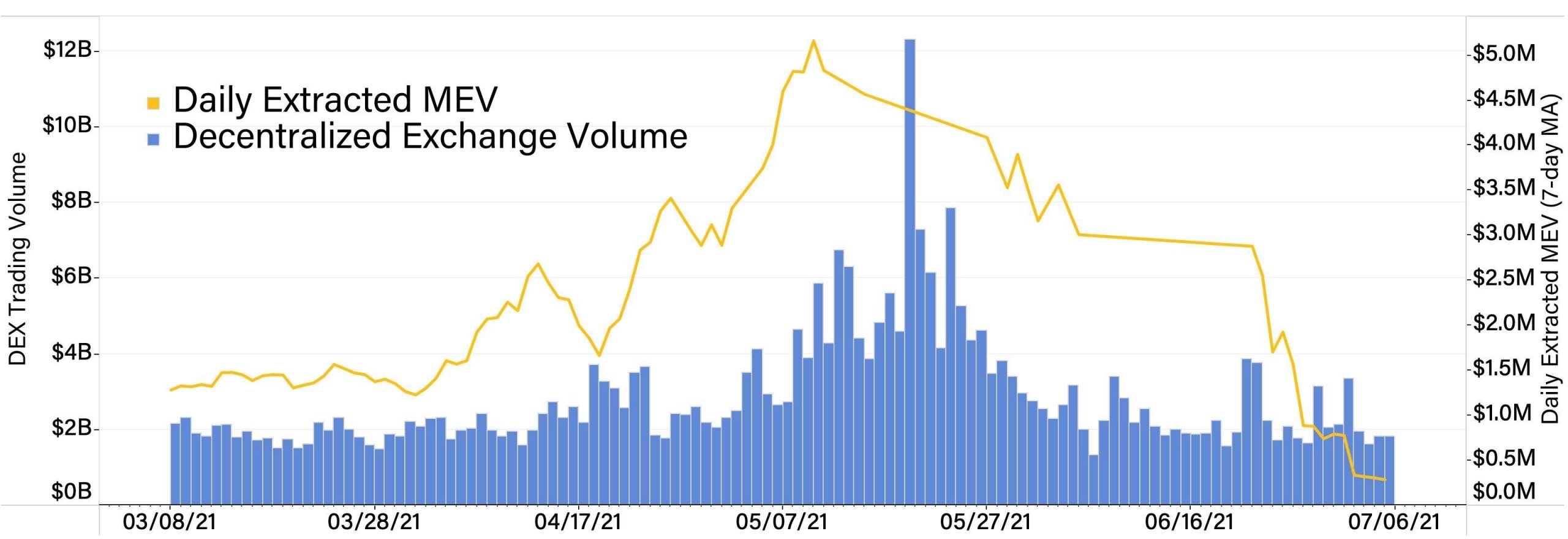Introduction
Welcome to the exciting world of arbitrage trading! If you’re looking to make profits in the financial markets, then you’ve come to the right place. In this article, we will explore the concept of arbitrage trading and provide you with the essential information to get started.
Arbitrage trading is a strategy used by traders to take advantage of price discrepancies in different markets. By exploiting these discrepancies, traders can profit from buying assets at a lower price in one market and selling them at a higher price in another market.
The allure of arbitrage trading lies in its potential for quick and relatively low-risk profits. Unlike other trading strategies that rely on market trends or fundamental analysis, arbitrage trading is based solely on exploiting price inefficiencies.
However, it’s important to note that arbitrage trading requires a deep understanding of the markets and the ability to act quickly. This strategy is most effective in highly liquid markets where price discrepancies are more common and can be quickly exploited.
In this article, we will cover the basic principles of arbitrage trading, including the different types of arbitrage strategies, steps to take before getting started, and tips for maximizing your chances of success. By the end of this guide, you will have a solid foundation to start your arbitrage trading journey.
What is Arbitrage Trading?
Arbitrage trading is a financial strategy that involves taking advantage of price discrepancies in different markets. The aim is to buy an asset at a lower price in one market and sell it at a higher price in another, thereby earning a profit from the price difference.
The concept of arbitrage is based on the principle of efficient markets, which states that market prices reflect all available information and are therefore always accurate. However, in reality, certain market anomalies or inefficiencies can occur, leading to temporary price discrepancies between different markets or assets.
Arbitrage traders capitalize on these temporary price discrepancies by executing trades that exploit the price inefficiencies. They typically use high-speed trading platforms and sophisticated algorithms to identify and execute trades within seconds or even milliseconds.
There are several types of arbitrage trading strategies, including:
- Spatial Arbitrage: Involves taking advantage of price differences between different geographical locations. For example, if a product is priced lower in one city than in another, an arbitrage trader could buy the product in the cheaper city and sell it in the more expensive city for a profit.
- Temporal Arbitrage: Involves exploiting price differences that occur over time. For example, if the price of a stock increases in anticipation of a positive earnings report, an arbitrage trader may buy the stock before the announcement and sell it afterward to profit from the price increase.
- Statistical Arbitrage: Involves identifying and exploiting price discrepancies between correlated securities. This strategy relies on complex mathematical models and statistical analysis to identify opportunities for profit.
- Merger Arbitrage: Involves taking advantage of price discrepancies that occur during mergers and acquisitions. Arbitrage traders may buy shares of a company that is being acquired and sell them after the merger is completed at a higher price.
Arbitrage trading can be highly profitable if executed correctly. However, it requires extensive market knowledge, advanced trading technology, and the ability to act quickly. Traders must also be mindful of the risks involved, such as transaction costs, market volatility, and regulatory limitations.
In the next section, we will delve into the basics of arbitrage trading, including the steps you need to take before getting started and how to choose the right markets for your arbitrage strategy.
The Basics of Arbitrage Trading
Arbitrage trading involves taking advantage of price discrepancies in different markets to make a profit. To better understand the basics of arbitrage trading, it’s essential to explore how this strategy works and the key principles behind it.
The fundamental concept of arbitrage trading is that prices of assets should be equal across all markets. However, due to various factors such as supply and demand dynamics, investor sentiment, and market inefficiencies, price discrepancies can occur.
Arbitrage traders seek to exploit these price differences by simultaneously buying and selling the same asset in different markets. This process involves a series of well-coordinated transactions executed quickly to capture the price differential.
To successfully execute an arbitrage trade, several key elements must be considered:
- Identify the Opportunity: Arbitrage traders rely on sophisticated trading algorithms and real-time data to identify price discrepancies in different markets. These algorithms scan multiple markets and assets, looking for any mispriced opportunities.
- Act Quickly: Timing is critical in arbitrage trading. The longer it takes to execute a trade, the greater the risk of the price differential narrowing or disappearing entirely. Traders must have access to high-speed trading platforms and reliable internet connections to ensure swift execution.
- Calculate Costs and Risks: Arbitrage traders must consider transaction costs, such as fees and commissions, as they can eat into potential profits. Additionally, market risks, such as volatility and liquidity concerns, must be carefully evaluated to mitigate potential losses.
- Ensure Proper Execution: Successful arbitrage trading requires precise execution of trades across multiple markets. Traders must ensure that orders are placed correctly, and transactions are coordinated seamlessly to capture the price differential effectively.
It’s important to note that arbitrage trading is not risk-free. While price discrepancies can present lucrative opportunities, they can also be short-lived or result from incorrect market valuations. Additionally, regulatory restrictions and market manipulation can impact the effectiveness of arbitrage trading strategies.
To mitigate risks and maximize potential profits, arbitrage traders often employ strategies such as:
- Risk Arbitrage: This strategy focuses on exploiting price discrepancies associated with impending events, such as mergers, acquisitions, or corporate actions. Traders carefully analyze the factors impacting the event outcome and position themselves to profit from any resulting price adjustments.
- Pair Trading: In pair trading, traders identify two correlated assets and utilize the price differences between them. If one asset is underpriced compared to the other, a long position is taken in the undervalued asset while simultaneously shorting the overvalued one.
- Conversion and Reversal Arbitrage: These strategies involve exploiting price discrepancies in options and their underlying securities. Conversion arbitrage aims to profit from price differences between the options and the underlying asset, while reversal arbitrage seeks to capitalize on mispricings in options with different strike prices or expiration dates.
By understanding the basics of arbitrage trading and implementing effective strategies, traders can potentially profit from these temporary market inefficiencies. However, it’s important to continuously monitor markets, adapt to changing conditions, and stay informed about relevant news and events that can impact prices.
In the next section, we will discuss the different types of arbitrage trading strategies in more detail, providing insights into their methodologies and potential advantages.
Different Types of Arbitrage Trading Strategies
Arbitrage trading encompasses various strategies that aim to exploit price discrepancies in different markets. Each strategy relies on different principles and methodologies to capture profit opportunities. Understanding the different types of arbitrage trading strategies can help traders identify the approach that best suits their trading style and objectives.
Here are some of the most common types of arbitrage trading strategies:
- Spatial Arbitrage: Spatial arbitrage involves taking advantage of price differences in different geographical locations. Traders identify products or assets that are priced lower in one location and higher in another, then buy in the cheaper location and sell in the more expensive one. This strategy is often applied to physical goods or commodities.
- Temporal Arbitrage: Temporal arbitrage seeks to profit from price differences that occur over time. Traders analyze market trends, news events, or economic data to predict future price movements. By buying or selling assets before or after specific events, traders aim to capture the resulting price changes.
- Statistical Arbitrage: Statistical arbitrage utilizes statistical models and quantitative analysis to identify and profit from price discrepancies between correlated securities. Traders look for patterns or deviations from historical price relationships to execute trades. This strategy typically involves high-frequency trading and relies heavily on advanced algorithms.
- Merger Arbitrage: Merger arbitrage focuses on exploiting price discrepancies that occur during mergers and acquisitions. Traders purchase shares of a target company during an acquisition announcement and sell them after the merger is completed, profiting from the price difference.
- Convertible Arbitrage: Convertible arbitrage involves trading convertible securities, such as convertible bonds or preferred stocks, to profit from discrepancies between their underlying assets and their convertible prices. Traders may benefit from fluctuations in the value of the underlying asset or changes in the conversion option’s value.
- Fixed Income Arbitrage: Fixed income arbitrage seeks to profit from price discrepancies in fixed income securities, such as bonds or interest rate derivatives. Traders identify mispriced bonds or interest rate derivatives and execute trades to capture the price discrepancy.
Each arbitrage strategy comes with its own set of advantages and challenges, and traders must carefully evaluate which strategy aligns best with their risk tolerance, market knowledge, and available resources. Some strategies require advanced technical analysis skills and access to real-time data, while others may rely more on fundamental analysis or market timing.
It’s important to note that arbitrage trading strategies can evolve and adapt over time as market conditions change. Traders need to continuously monitor market dynamics, identify new opportunities, and adjust their strategies accordingly. Market conditions, liquidity, transaction costs, and regulatory factors can impact the success of arbitrage trading strategies.
By understanding the different types of arbitrage trading strategies and their underlying principles, traders can enhance their ability to identify and capitalize on price discrepancies in the financial markets. In the next section, we will delve into the steps you need to take before starting your arbitrage trading journey.
Steps to Take Before Starting Arbitrage Trading
Before diving into the world of arbitrage trading, it’s crucial to take certain steps to ensure that you are well-prepared and equipped for success. This section will outline the key steps that you should consider before starting your arbitrage trading journey.
- Educate Yourself: Start by gaining a solid understanding of arbitrage trading and its various strategies. Familiarize yourself with the concepts, terminology, and techniques used in arbitrage trading. There are numerous books, online courses, and resources available to help you grasp the fundamentals.
- Develop a Trading Plan: Outline your trading goals, risk tolerance, and preferred arbitrage strategies. A well-defined trading plan will serve as a roadmap, providing clarity and guiding your decision-making process. Determine the financial resources you are willing to allocate to arbitrage trading and establish risk management protocols.
- Acquire Market Knowledge: Stay updated with the latest news and developments in the markets you plan to trade. Analyze historical price data, market trends, and factors that may impact the assets you are interested in. The more market knowledge you have, the better equipped you will be to identify potential arbitrage opportunities.
- Choose a Reliable Brokerage: Select a reputable brokerage platform that offers access to the markets and instruments you want to trade. Consider factors such as commission fees, execution speed, trading tools, and customer support. Ensure that the brokerage is regulated and provides a secure trading environment.
- Set Up Trading Accounts: Open trading accounts with the chosen brokerage platform. Complete the necessary application forms, provide required identification documents, and fund your accounts. Familiarize yourself with the platform’s features and functionality to ensure a smooth trading experience.
- Utilize Technology: Invest in reliable trading technology that provides real-time market data, analytical tools, and efficient order execution. High-speed internet connectivity and trading software with advanced features can significantly enhance your arbitrage trading capabilities.
- Test and Refine Your Strategy: Before committing significant capital, it’s advisable to test your arbitrage trading strategy with a small amount of money or through a paper trading account. Monitor the performance of your strategy, identify areas for improvement, and refine your approach based on the insights gained.
- Implement Risk Management: Develop and implement a robust risk management plan to protect your capital. Define your risk tolerance, set stop-loss orders, and establish proper position sizing guidelines. Consistently evaluate and adjust your risk management parameters as market conditions evolve.
- Monitor and Adapt: Regularly monitor the markets, assets, and trades to stay informed about price movements and potential opportunities. Be prepared to adapt your strategy and seize advantages as market conditions change.
Taking these proactive steps will help you lay a strong foundation for your arbitrage trading endeavors. Remember, patience, discipline, and continuous learning are essential traits for success in the world of arbitrage trading.
In the next section, we will explore how to choose the right markets for your arbitrage trading strategy, considering factors such as liquidity, volatility, and accessibility.
Choosing the Right Markets for Arbitrage Trading
Choosing the right markets for your arbitrage trading strategy is crucial for maximizing your chances of success. Not all markets are suitable for arbitrage trading, and it’s essential to consider several factors to ensure optimal trading conditions. This section will guide you through the key considerations for selecting the right markets for your arbitrage trading endeavors.
Liquidity: Arbitrage trading requires quickly entering and exiting trades, so it is crucial to choose markets with high liquidity. Highly liquid markets have a significant number of buyers and sellers, which reduces the impact of large trades on prices and ensures tighter bid-ask spreads. Liquidity also decreases the risk of delayed trade execution, enabling you to capture price differentials effectively.
Volatility: Volatility is another important factor to consider when selecting markets for arbitrage trading. Higher volatility provides more significant price movements, increasing the potential for price discrepancies and profit opportunities. However, be cautious as higher volatility can also lead to increased risk, so it’s essential to manage your positions and set appropriate risk management strategies.
Accessibility: Ensure that the markets you choose for arbitrage trading are easily accessible. This includes factors such as availability of trading platforms, access to market data, and the ability to execute trades efficiently. Consider the trading hours of the market and any regional restrictions or limitations on trading.
Regulatory Environment: Be aware of the regulatory environment in the markets you plan to trade. Different countries have different regulations and requirements for trading, and it’s crucial to operate within the legal frameworks. Familiarize yourself with the rules and regulations governing the markets you are interested in and ensure compliance to avoid any legal complications.
Market Knowledge: Choose markets that align with your area of expertise or interest. Having a good understanding of the market dynamics, fundamental factors, and historical price patterns will give you an edge in identifying and capitalizing on arbitrage opportunities. Stay informed about relevant news and developments in the chosen markets to anticipate potential price discrepancies.
Transaction Costs: Consider the transaction costs associated with trading in specific markets. These costs can include brokerage commissions, exchange fees, and other charges. Higher transaction costs can eat into your potential profits, so it’s important to factor them into your trading plan and evaluate the cost-effectiveness of various markets.
Market Efficiency: Assess the level of market efficiency in the markets you plan to trade. Efficient markets quickly incorporate all available information into prices, making it harder to find significant price discrepancies. Look for markets with less efficiency, where mispricings are more likely to occur, providing better arbitrage opportunities.
By considering these factors and conducting thorough research, you can choose markets that align with your trading strategy and offer the greatest potential for successful arbitrage trading. Remember, market conditions may change over time, so it’s important to continuously evaluate and adapt your market selection as needed.
In the next section, we will discuss how to set up an effective arbitrage trading strategy, including factors such as asset selection, trade timing, and risk management.
Setting Up an Arbitrage Trading Strategy
Setting up an effective arbitrage trading strategy requires careful planning and consideration of various factors. In this section, we will discuss the key elements involved in structuring an arbitrage trading strategy, including asset selection, trade timing, and risk management.
Asset Selection: Determine the assets or markets you will focus on for your arbitrage trading strategy. This could include stocks, commodities, currencies, or any other financial instruments that exhibit price discrepancies across different markets. Consider factors such as liquidity, volatility, and your level of expertise in the chosen assets.
Identify Trading Opportunities: Utilize advanced trading platforms, real-time data feeds, and algorithmic tools to identify potential arbitrage opportunities. Look for price discrepancies between different markets or correlated assets. These opportunities could arise from spatial, temporal, statistical, or other types of arbitrage.
Trade Timing: Timing is critical in arbitrage trading. Once you identify a potential opportunity, it’s important to act swiftly to execute your trades. Delayed execution can result in missed opportunities or reduced profit potential. Utilize technology and automation to execute trades quickly and efficiently.
Execution Method: Determine the execution method for your trades. This could involve manual trading, automated trading through algorithms or trading bots, or a combination of both. Keep in mind that technology-driven execution methods can enhance speed and accuracy, but they also require sufficient testing and monitoring to ensure reliable performance.
Risk Management: Develop a robust risk management plan to protect your trades and capital. Set appropriate stop-loss levels to limit potential losses. Implement position sizing strategies to manage your exposure to each trade. Regularly review and adjust your risk management plan as market conditions change.
Monitoring and Evaluation: Continuously monitor your trades and the performance of your arbitrage strategy. Regularly assess the effectiveness of your strategy and make adjustments as needed. Keep detailed records of your trades for analysis and review to identify patterns and areas for improvement.
Continued Learning and Adaptation: Stay informed about market trends, news, and developments that may impact your chosen assets or trading strategy. Keep up with industry insights and advancements in arbitrage trading techniques. Continued learning and adaptation are crucial for staying ahead in an ever-changing market environment.
Remember, as with any trading strategy, there are risks involved with arbitrage trading. It is important to carefully consider and assess these risks before allocating substantial capital. It is also advisable to start with smaller trading sizes or utilize paper trading accounts to test your strategy and gain experience before scaling up.
By setting up a well-defined arbitrage trading strategy, incorporating asset selection, trade timing, risk management, and continuous evaluation, you can increase your chances of success in the world of arbitrage trading.
In the next section, we will discuss the risks and challenges associated with arbitrage trading, and provide insights into how to navigate them effectively.
Risks and Challenges of Arbitrage Trading
While arbitrage trading can be a lucrative strategy, it is important to be aware of the risks and challenges involved. Understanding these potential pitfalls is key to effectively navigating the world of arbitrage trading. In this section, we will outline some of the key risks and challenges to consider.
Execution Risk: One of the main challenges with arbitrage trading is the risk of execution. Since arbitrage trades need to be executed quickly, delays in order placement or execution can lead to missed opportunities or reduced profit potential. To mitigate execution risk, it is crucial to have a reliable and fast trading platform, access to real-time market data, and a stable internet connection.
Market Volatility: Arbitrage traders rely on price discrepancies between different markets. However, market volatility can disrupt these discrepancies and make it harder to execute profitable trades. Rapid price movements, especially during news events or market shocks, can significantly impact the effectiveness of arbitrage strategies. Traders must be prepared to manage and adapt to increased volatility.
Liquidity Challenges: While liquidity is desirable for executing arbitrage trades, it can also present challenges. In less liquid markets, it may be difficult to find counterparties to execute trades at desirable prices, leading to wider bid-ask spreads. Limited liquidity can also make it harder to enter or exit positions quickly, increasing the risk of slippage and reduced profitability.
Regulatory Constraints: Each market operates under its own set of regulations, which can pose challenges for arbitrage traders. There may be restrictions on trading certain assets or limitations on cross-border trades. It is essential to thoroughly understand the regulatory landscape and ensure compliance to avoid legal issues or trading restrictions.
Technological Risks: Arbitrage trading often relies on advanced trading technology and algorithms. While these tools can enhance performance, they also come with their own set of risks. Technical glitches, system failures, or improperly calibrated algorithms can result in errors and potential losses. Traders must have proper risk controls in place and continuously monitor and test their technology for reliability.
Price Risk: Although arbitrage trading aims to take advantage of price discrepancies, there is always the risk that prices may not converge as expected. This can occur due to unpredictable market events, changing market conditions, or the market’s reaction to new information. Traders must be prepared for the possibility of prolonged or unexpected price divergences, which can result in potential losses.
Competition: Arbitrage opportunities are often fleeting, attracting a high level of competition from other traders. As more participants seek to exploit price discrepancies, the window of opportunity for profitable trades may narrow. Traders must stay ahead by utilizing advanced technology, continuously monitoring the markets, and identifying unique or niche opportunities.
Psychological Challenges: Arbitrage trading requires discipline, patience, and the ability to make quick decisions. Traders may face psychological challenges, such as managing emotions during periods of volatility, handling losses, or resisting the urge to overtrade. Developing and maintaining a strong mindset and adhering to a well-defined trading plan can help mitigate these psychological challenges.
It is important to approach arbitrage trading with a realistic mindset and understanding of the risks involved. Proper risk management, thorough market analysis, and continuous learning and adaptation are essential to navigate these challenges successfully.
In the next section, we will provide some helpful tips for successful arbitrage trading.
Tips for Successful Arbitrage Trading
Arbitrage trading can provide lucrative opportunities, but it requires careful planning, execution, and risk management. By following these tips, you can increase your chances of success in the world of arbitrage trading.
1. Thoroughly Research and Analyze: Before executing any arbitrage trades, conduct thorough research and analysis. Understand the markets, assets, and factors that can influence prices. Stay informed about news, economic events, and market trends that may impact your chosen assets.
2. Develop a Robust Risk Management Strategy: Implement a comprehensive risk management strategy to protect your capital. Establish appropriate position sizing, set stop-loss levels, and avoid risking a significant portion of your account on a single trade.
3. Utilize Advanced Technology: Leverage advanced trading technology and tools to identify and execute arbitrage trades swiftly. Utilize real-time data feeds, automated trading algorithms, and reliable trading platforms to enhance your trading efficiency.
4. Monitor Market Liquidity and Volatility: Keep a close eye on market liquidity and volatility. Monitor bid-ask spreads and market depth to ensure optimal execution. Be prepared to adjust your trading approach during periods of increased volatility.
5. Constantly Monitor and Evaluate: Continuously monitor your trades and the performance of your arbitrage strategy. Regularly review your trade execution, profitability, and risk management. Identify areas for improvement and make adjustments to your strategy as needed.
6. Stay Disciplined and Stick to Your Plan: Follow your trading plan and stay disciplined in executing your trades. Avoid succumbing to impulsive decisions or deviating from your well-defined strategy. Emotions can be detrimental in arbitrage trading, so maintain a disciplined mindset.
7. Diversify Your Arbitrage Opportunities: Consider diversifying your arbitrage trades across different markets, asset classes, or arbitrage strategies. This can help spread the risk and increase the potential for consistent profits.
8. Learn from Experience: Keep a detailed trading journal to analyze your trades and learn from your experiences. Document your successes, failures, and lessons learned. Continuously educate yourself, seek feedback from other traders, and adapt your approach based on your findings.
9. Stay Updated with Regulatory Requirements: Ensure that you are aware of and compliant with the regulatory requirements of the markets you trade. Stay informed about any changes or updates in regulations that may impact your trading activities.
10. Practice Patience and Persistence: Arbitrage opportunities may not arise frequently, and some trades may not yield immediate profits. Practice patience and persistence, as success in arbitrage trading often comes from consistently identifying and seizing opportunities over time.
Remember, successful arbitrage trading requires a combination of skill, discipline, and continuous learning. It is important to remain adaptable, stay informed, and constantly refine your strategies to navigate the ever-changing landscape of arbitrage trading.
In the final section, we will bring all the key points together to conclude our exploration of arbitrage trading.
Conclusion
Arbitrage trading offers the potential for profitable opportunities by taking advantage of price discrepancies in different markets. It is an exciting and challenging strategy that requires a thorough understanding of the markets, a disciplined approach, and effective risk management.
In this article, we explored the basics of arbitrage trading, including its definition and various types of arbitrage strategies. We discussed the steps to take before starting arbitrage trading, such as educating yourself, developing a trading plan, and choosing the right markets. We also highlighted the risks and challenges involved, such as execution risk, market volatility, and regulatory constraints.
To succeed in arbitrage trading, it is essential to set up a well-defined strategy, incorporating asset selection, trade timing, and risk management. Utilizing advanced trading technology, continuously monitoring the markets, and adapting your approach as needed are also crucial for success.
We provided some valuable tips for successful arbitrage trading, including thorough research and analysis, robust risk management, utilizing advanced technology, and learning from experience. Staying disciplined, diversified, and patient are also key factors to consider in your trading journey.
It is important to remember that while arbitrage trading can be potentially profitable, it comes with risks. No trading strategy is foolproof, and it requires ongoing education, adaptation, and analytical skills to navigate the ever-changing market conditions.
Arbitrage trading can be an exciting and rewarding path for traders who are willing to put in the time, effort, and discipline required. By following the guidelines outlined in this article and continuously sharpening your skills, you can increase your chances of success in the dynamic world of arbitrage trading.

























